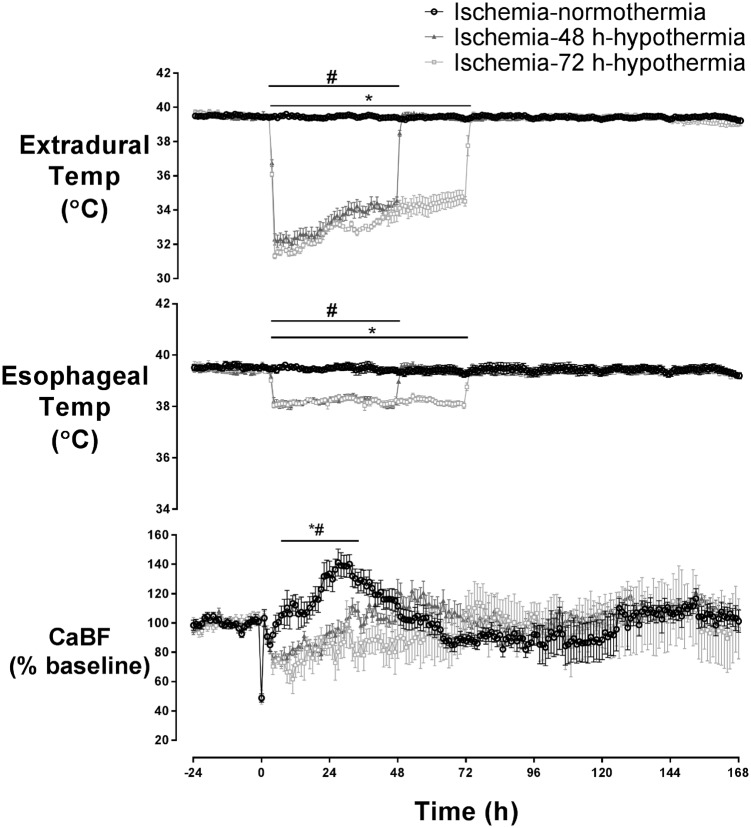Figure 1.
Change in extradural temperature, esophageal temperature, and carotid artery blood flow before, during, and after 30 min of global cerebral ischemia (time 0) in near-term fetal sheep, showing the ischemia-normothermia (n = 8), ischemia-48 h hypothermia (n = 8), and ischemia-72 h hypothermia (n = 8) groups. Extradural temperature was significantly reduced in both hypothermia groups during treatment (p < 0.05) and returned to baseline when cooling ended at 48 or 72 h. A significant reduction in esophageal temperature was seen with the onset of hypothermia (p < 0.05). CaBF increased in the ischemia-normothermia group between 6 and 36 h after ischemia compared to either hypothermia group (p < 0.05). Data are mean ± SEM, *p < 0.05 ischemia-72 h hypothermia vs. ischemia-normothermia, #p < 0.05 ischemia-48 h hypothermia vs. ischemia-normothermia.

